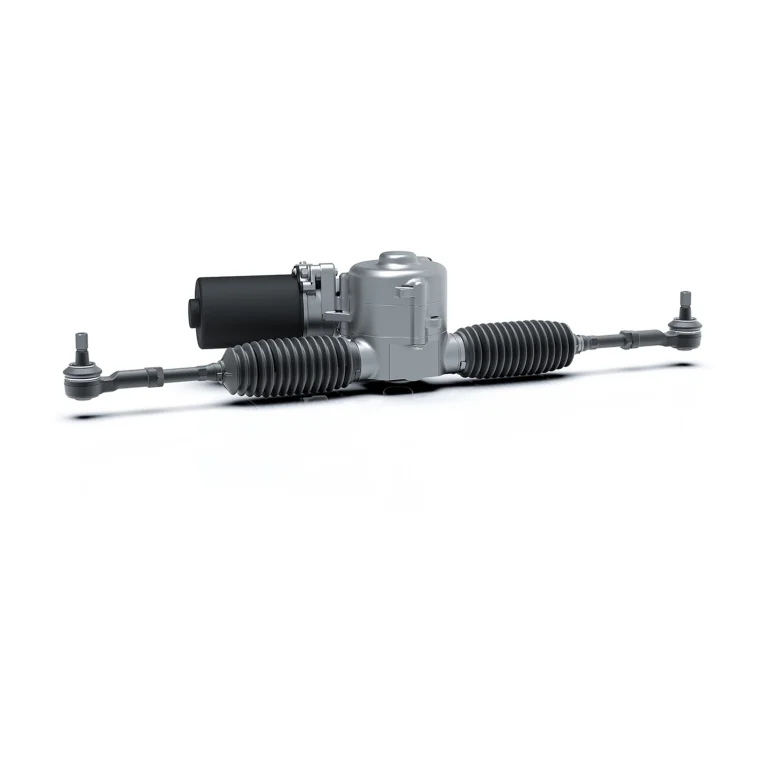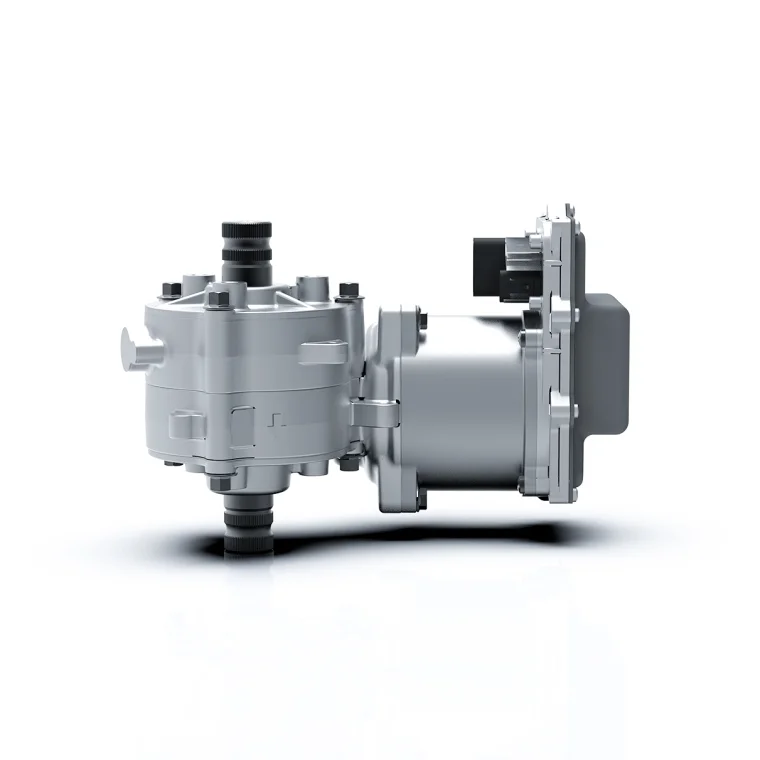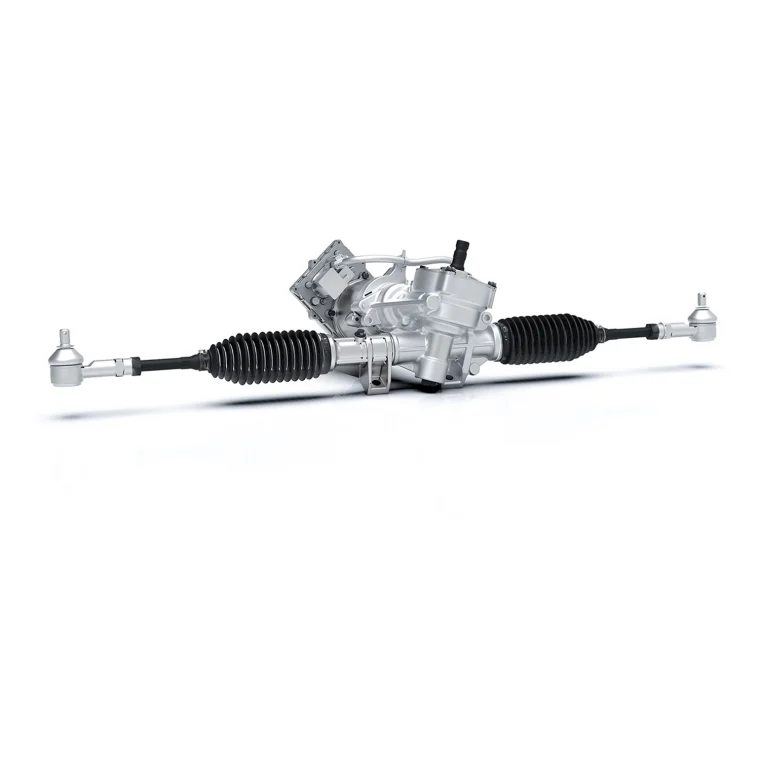As autonomous vehicles continue to revolutionize the automotive industry, various technological advancements are being integrated to ensure their safe and efficient operation. One such innovation is the steer-by-wire (SBW) system, which plays a vital role in how autonomous vehicles navigate and maneuver on the road. In this blog, we will explore the role and advantages of the TEEMO SBW system in autonomous vehicles.
What Are the Steer-By-Wire Systems?
Steer-by-wire systems, also known as electronic steering systems, eliminate the physical connection between the steering wheel and the wheels of a vehicle. Instead of relying on mechanical linkages, these systems use electronic sensors, actuators, and control units to transmit steering commands. By converting driver inputs into electronic signals, steer-by-wire systems offer precise control over the vehicle's steering, enhancing its overall performance.

Comparison with Traditional Steering Systems
1. Mechanical Linkages vs. Electronic Control
Traditional steering systems use mechanical linkages, such as a steering column, shaft, and gears, to transmit the driver's steering inputs to the wheels. In contrast, SBW systems eliminate these mechanical linkages and rely on electronic control to steer the vehicle. This electronic control allows for more precise and instantaneous steering inputs, resulting in improved vehicle control and maneuverability.
2. Weight and Space Savings
SBW systems are lighter and more compact compared to traditional steering systems. By eliminating the mechanical components, SBW systems reduce the weight of the vehicle, leading to improved fuel efficiency and performance. Additionally, the space saved by removing the mechanical linkages can be utilized for other purposes, such as increasing passenger or cargo space.
Advantages of TEEMO Steer-By-Wire Systems
1. Enables Autonomous Navigation
A. Enhanced Control and Precision
The TEEMO SBW system can play a vital role in autonomous vehicles by providing precise and responsive steering control. With the ability to interpret and execute steering commands with high accuracy, the TEEMO SBW system enables autonomous vehicles to navigate complex road conditions and perform precise maneuvers.
B. Integration with Sensor Technologies
The TEEMO SBW system integrates seamlessly with a variety of sensor technologies used in autonomous vehicles, such as cameras, LIDAR, and RADAR. These sensors provide real-time data about the vehicle's surroundings, enabling the SBW system to make intelligent steering decisions based on detected obstacles, road conditions, and traffic patterns.
C. Real-time Data Processing and Decision Making
The integration of the TEEMO SBW system with advanced computing capabilities enables autonomous vehicles to process large amounts of sensor data in real time. By analyzing this data, the SBW system can make split-second decisions on steering inputs, ensuring safe and efficient navigation.

The Roles of TEEMO SBW Systems
1. Safety and Redundancy Measures
A. Reducing the Risk of Mechanical Failures
TEEMO SBW systems eliminate many of the mechanical components found in traditional steering systems, reducing the risk of mechanical failures. This enhances the overall reliability of the steering system, minimizing the chances of sudden steering malfunctions that could compromise the safety of the vehicle and its occupants.
B. Backup Systems and Fail-Safe Mechanisms
To ensure safety in the event of a failure in the SBW system, backup systems and fail-safe mechanisms are implemented. These systems can include redundant electronic components, backup power sources, and mechanical backup systems that allow for manual steering control. By providing multiple layers of redundancy, TEEMO SBW systems enhance the safety and reliability of autonomous vehicles.
C. Ensuring Passenger Safety in Emergency Situations
TEEMO SBW systems can also contribute to passenger safety in emergency situations. For example, in the event of a collision or sudden braking, TEEMO SBW systems can be programmed to automatically steer the vehicle away from potential hazards or maintain stability during evasive maneuvers, reducing the risk of accidents and injuries.
2. Improved Vehicle Performance
A. Optimized Steering Response and Handling
TEEMO SBW systems offer improved steering response and handling characteristics compared to traditional steering systems. By eliminating mechanical linkages, TEEMO SBW systems provide precise and instantaneous steering inputs, resulting in enhanced vehicle control and maneuverability.
B. Customizable Steering Characteristics
TEEMO SBW systems allow for customizable steering characteristics, giving drivers the ability to personalize their driving experience. With traditional steering systems, the steering feel and responsiveness are fixed and cannot be easily adjusted. However, with TEEMO SBW systems, drivers can choose from different steering modes or settings that suit their preferences.
C. Reduced Energy Consumption
TEEMO SBW systems contribute to reduced energy consumption in autonomous vehicles. Traditional steering systems require power assistance, which can consume a significant amount of energy, especially at low speeds or during parking maneuvers. In contrast, TEEMO SBW systems eliminate the need for power assistance, as the steering inputs are electronically controlled.
About Us
TEEMO has long been focusing on the research and development of intelligent wire control platforms, wire control components, platform domain control system and other core technologies of automatic driving, and has launched a variety of intelligent skateboard platform series products covering medium and low-speed commercial scenarios, and is the leading domestic intelligent skateboard platform and automatic driving solution provider, serving more than 300 customers around the world.

Conclusion
Steer-by-wire systems play a vital role in the development of autonomous vehicles. By replacing traditional mechanical steering mechanisms with electronic controls, these systems provide increased safety, greater design flexibility, and improved maneuverability. The seamless integration of steer-by-wire systems with autonomous driving technology ensures precise and reliable steering control, while redundancy and fail-safe mechanisms reduce the risk of system failure. With advances in sensor technology and collaborative efforts, steer-by-wire systems will become the solution to achieve safer and more efficient autonomous driving.
If you are looking for steer-by-wire (SBW) system solutions,welcome to contact TEEMO.
E-mail:support@teemo.group,sales@teemo.group








